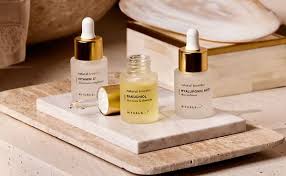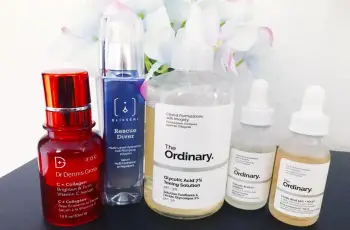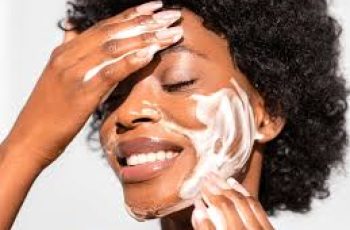
Fungal Acne: The Hidden Culprit Behind Stubborn Breakouts
Are you battling stubborn breakouts? They might not be true acne at all. You’ve tried many products. Over-the-counter treatments failed. Dermatologist creams didn’t help.
Even diet changes showed no results. The real problem could be fungal acne. This condition is less commonly known. It’s also increasingly recognized.
Fungal acne mimics traditional acne closely. It is often mistaken for it. However, its origin is different. Its symptoms are unique. The treatments needed are also distinct.
Scientifically, it’s called Malassezia folliculitis. It’s also known as Pityrosporum folliculitis.
Let’s explore fungal acne in depth. We will learn how to identify it. We will uncover its causes. Most importantly, we’ll discuss effective treatment. We will also cover prevention strategies.
This information is vital if it’s been a hidden issue for you.
What Exactly Is Fungal Acne?
Fungal acne is not true acne. Not in the medical sense. Common acne, or acne vulgaris, has different causes. It’s caused by bacteria. Hormonal imbalances play a role. Clogged pores also contribute. Fungal acne comes from yeast overgrowth. This yeast lives on the skin. It particularly affects hair follicles.
The responsible yeast is Malassezia. This yeast is natural. It lives on everyone’s skin. Usually, it lives peacefully there. It is part of the skin’s microbiome.
But balance can be disrupted. This allows the yeast to multiply. It grows uncontrollably. This leads to inflamed hair follicles. They form what looks like acne.
These bumps are small. They are often itchy. They can appear suddenly. They usually show up in groups. Or they come in clusters. Common locations include the forehead.
The chest, shoulders, and upper back are also common. Sometimes, they even appear on the arms. These areas trap heat and sweat. Because they look like traditional acne, many get confused.
People spend months or years. They use ineffective acne treatments. Some treatments can even make it worse.
Common Causes and Triggers of Fungal Acne
Understanding the causes is key. It helps treat fungal acne successfully. It also prevents recurrence. Several factors can trigger or worsen it.
Overproduction of Sweat and Moisture
Malassezia yeast loves warmth. It thrives in moist environments. Excessive sweating creates ideal conditions. This happens from exercise. Hot weather also contributes. Stress can also increase sweat. When sweat gets trapped, risk grows. This is especially true under tight clothing. Non-breathable fabrics increase the risk too.
Tight or Occlusive Clothing
Clothing impacts skin health. Fabrics that don’t breathe are a problem. They trap moisture and heat. This happens during workouts. It’s also true in humid places. This creates a breeding ground for yeast.
Hormonal Imbalances
Hormonal conditions can affect skin. Polycystic ovary syndrome (PCOS) is one. Insulin resistance is another example. These alter skin oil production. They also affect immune response.
This makes some people more prone. They become vulnerable to yeast issues.
Use of Antibiotics
Antibiotics can be tricky. They treat bacterial acne. But they might worsen fungal acne. Antibiotics disrupt skin bacteria. This allows yeast to grow unchecked.
High-Sugar or High-Carb Diet
Yeast needs food to grow. Sugar is a primary food source for it. Diets high in simple carbohydrates are risky. Refined sugars also contribute. Processed foods are problematic.
These support an internal environment. This environment encourages yeast overgrowth. It affects the skin too.
Skin Care Ingredients
Some skincare ingredients are problematic. They are common in many products. Moisturizers often contain them. Sunscreens and cosmetics do too. Examples include esters and fatty acids.
Certain oils are also a concern. Plant-derived oils can feed yeast. Algae-derived oils also contribute. Polysorbates are another culprit. Ironically, some “non-comedogenic” products exist.
They may still promote fungal growth.
Warm and Humid Climates
Your environment matters. Living in a tropical climate increases risk. Humid environments are also challenging. Your skin becomes more susceptible.
Conditions encourage yeast overgrowth. Flare-ups are common in summer. They often become most noticeable then.
How to Identify Fungal Acne
Fungal acne has distinct traits. It shares some with bacterial acne. But key differences exist.
Itchiness: Fungal acne is often very itchy. Typical acne is usually not.
Uniform bumps: Bumps are usually the same size. They are similar in shape. They appear as pustules or papules.
Clustering: Bumps appear in clusters. They are common on the chest. The back and forehead are also key areas.
No blackheads or whiteheads: Fungal acne lacks these. Acne vulgaris features comedones. These are blackheads and whiteheads.
Ineffectiveness of standard acne treatments: Have you tried everything? Benzoyl peroxide and salicylic acid don’t work? Fungal acne might be the reason.
Fungal Acne vs. Acne Vulgaris vs. Hormonal Acne
It’s helpful to compare these conditions. This table highlights the differences.
Feature, Fungal Acne, Acne Vulgaris, Hormonal Acne, Cause, Overgrowth of yeast (Malassezia), Bacterial overgrowth, clogged pores, Hormonal imbalance, Appearance, Small, itchy, uniform bumps
Mixed: comedones, pustules, cysts, Painful cysts, especially jawline, Common Locations, Forehead, chest, back, Face (T-zone), back, shoulders, Chin, jawline, neck, Triggers
Heat, sweat, humidity, antibiotics, Hormones, stress, diet, skincare, Menstrual cycle, PCOS, stress, Response to meds, Poor, Generally effective, Hormone therapy, retinoids
Effective Treatments for Fungal Acne
Successful treatment needs a shift. Your skincare approach must change. Traditional acne treatments won’t work. Some may even worsen it. They can feed the yeast. Antifungal therapies are crucial.
They are the key to recovery.
Antifungal Shampoos
These shampoos are versatile. They can be used on the scalp. You can also apply them directly to skin.
Ketoconazole (Nizoral): A common and effective option.
Selenium sulfide (Selsun Blue): Another good choice.
Zinc pyrithione (Head & Shoulders Clinical Strength): Also very useful.
Apply the shampoo to your skin. Let it sit for 5 to 10 minutes. This allows active ingredients to work. Then, rinse thoroughly.
Topical Antifungal Creams
Look for specific ingredients. These creams or gels are helpful.
Clotrimazole: A common antifungal agent.
Terbinafine (Lamisil): Also very effective.
Apply these directly to affected areas. Use them once or twice daily. This depends on severity. Follow product instructions carefully.
Sulfur-Based Washes
Products with sulfur are beneficial. Derma Made Medi Wash is an example. Sulfur has dual properties. It’s both antifungal and anti-inflammatory. Sulfur reduces yeast population.
It also calms irritated skin. This wash is also good for rosacea. It helps manage other conditions.
Oral Antifungal Medications
Severe cases may need more. Persistent issues also apply. A dermatologist might prescribe oral meds.
Fluconazole: A common oral antifungal.
Itraconazole: Another systemic option.
These are systemic drugs. They are very effective. But they need medical supervision. There are potential side effects. Always consult your doctor.
Long-Term Prevention and Maintenance
You’ve cleared a breakout. The next step is prevention. Stopping future flare-ups is crucial. Here are several steps to reduce recurrence.
Shower immediately after sweating. Always change into clean clothes. Choose dry clothing.
Use antifungal shampoo weekly. This works as a preventative body wash. Especially do this in humid seasons. Or if you exercise often.
Avoid certain skincare ingredients. Some ingredients feed yeast. Coconut oil is one example. Lauric acid is another. Polysorbates should be avoided.
Evaluate your diet. Reduce your sugar intake. Consider antifungal foods. Garlic is a good option. Coconut oil can be used internally. Fermented vegetables are also helpful.
Discuss hormonal imbalances. Talk to a healthcare provider. Do this if you suspect conditions like PCOS. Hormones can greatly influence skin.
Final Thoughts: Don’t Let Fungal Acne Fool You
Your persistent breakouts might be misleading. They may not be acne at all. You’ve tried everything imaginable. Your skin remains bumpy, red, and itchy. This is especially true on your chest, back, or forehead.
Then consider fungal acne. It’s more common than many realize. Thankfully, it’s highly treatable. But it needs correct diagnosis.
The right approach will help. This includes antifungal treatments. Lifestyle modifications are important. Preventative care is also key. With these steps, you can get your skin back on track.
When in doubt, see a dermatologist. They can confirm the diagnosis. They will provide a tailored treatment plan. Effective skincare begins with understanding. Know what your skin is truly facing.
Your skin will thank you for it.


